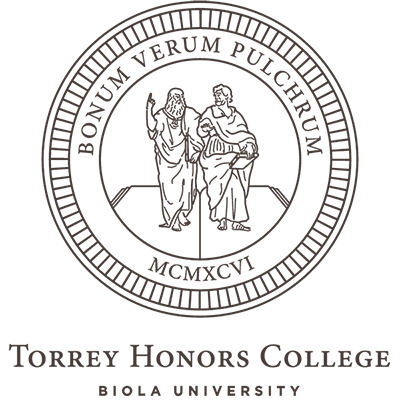A scene from The Canterbury Psalter (12th century)
Blog
Anima Christi
“Soul of Christ, sanctify me.” The anonymous hymn beginning Anima Christi sanctifica me dates to the fourteenth century (see the entry in John Julian’s Dictionary of Hymnology (London: John Murray, 1892), p. 70). Here’s how Roman Catholic it is: It has been popular among Roman Catholics as a eucharistic hymn and is included in the Roman Missal. Ignatius of Loyola, founder of the Jesuit Order, makes use of it in his Spiritual Exercises. It sometimes goes by the title “Aspirations of St. Ignatius,” and at the popular level is often thought to be written by Ignatius (though this has long been known to be documentably false). A medieval Pope declared that penitents who recited it at Mass “between the Elevation and the third Agnus Dei” earned a three-thousand-day indulgence. In the nineteenth century the Anima Christi had a surge of popularity and was once again “indulgenced” by Pius IX in 1854. So the hymn is, among other things, extremely Roman Catholic.
But not exclusively so. Most importantly, there is nothing in the text that is uniquely Roman Catholic, or that contradicts Protestant theology. Here it is:
Soul of Christ, sanctify me.
Body of Christ, save me.
Blood of Christ, inebriate me.
Water from the side of Christ, wash me.
Passion of Christ, strengthen me.
O good Jesus, hear me.
Within Thy wounds, hide me.
Separated from Thee let me never be.
From the malignant enemy, defend me.
At the hour of death, call me.
To come to Thee, bid me,
That I may praise Thee in the company
Of Thy Saints, for all eternity.
The Anglican Lancelot Andrewes (1555-1626) incorporated the prayer into his Private Prayers; and I especially like the way he arranged it in abbreviated form for parallelism:

Andrewes wrote his devotions out in Greek; the above image also includes an old, literal translation of his devotions that preserves this helpfully schematic layout.
The Anima Christi was translated into German as an expanded, rhyming hymn (see Julian’s Dictionary, above, for details), and became popular among various pietist groups. That’s where John Wesley picked it up, rendering Johannes Scheffler’s “Die Seele Christi Heil’ge Mich” into English in the form “Jesu, Thy Soul Renew My Own.”
Jesu, thy soul renew my own,
Thy sufferings for my sins atone;
Thy sacred body slain for me
From sin and misery set me free.
The water issuing from thy side
The soldier’s spear had open’d wide,
That bathe my heart, and all thy blood
Refresh and bring me near to God.
The blood-sweat trickling from thy face
Prevent my coming in disgrace:
Thy holy passion, death and tomb
Shall screen me from the wrath to come.
O Jesu, grant—this my request
Take, hide me quite in thy dear breast,
And make me in thy wounds to dwell
Secure from all the fiends of hell.
Call me in my last agony,
And bring me, O my God, to thee,
That I with all thy saints above
May never cease to praise thy love.
Wesley follows Scheffler pretty closely, but the idea of expanding “me” to “my own [soul]” is a very effective way of matching up the Savior and the saved: his soul sanctifies my soul.
I’ll keep an eye out for other Protestant uses of the Anima Christi, but these two Anglican sources (Wesley was of course thoroughly Anglican, though we often mistake him for being denominationally Methodist) are enough to begin building the case for this medieval devotion to be something that can make its home in Protestant spirituality.
Just a few notes by way of theological analysis of this anonymous medieval hymn: It is a prayer about salvation by union with Christ, and its poetic strategy is to itemize the elements of Christ’s death and address them. It lists Christ’s soul, body, blood, water from his side [aqua lateris Christi], and passion, and to each of these it correlates a benefit: sanctification, salvation, refreshing, cleansing, strength.
One might object to the strategy of dividing up the aspects of Christ in this way, and speaking to them as if personifying them. But (1) the point of distinguishing them poetically is to gain a sense of the comprehensiveness of total salvation in Christ, (2) personification is less offensive to you the more poetically minded you are, so O soul! grow more poetic, and (3) this objection wouldn’t be particularly Protestant at any rate.
The itemize-and-address strategy gives way, after five lines, to a direct prayer to Jesus, and then a compelling petition for Jesus to make himself the hiding place of those he saves: “O good Jesus, hear me. Within Thy wounds, hide me.” There could hardly be a stronger or more personal sense of union with Christ. And the final lines look forward to hearing Christ’s own voice summon us into eternal praise. If the opening lines seem to dis-member Christ into impersonal personifications, the final lines are relentlessly personal and interpersonal.
On “Inebriate me,” since it would be eccentric to list drunkenness as a benefit alongside salvation and cleansing, I think it’s best to take it in the sense of a overflowing or exhilarating. I don’t know the range of uses of the Latin inebria, but the OED lists the 1610 Douay Bible’s Psalm 65:9 as “Thou hast visited the earth, and hast inebriated it.”
The concrete nouns of the opening lines (body, blood, water from the side) certainly function well in the context of the Lord’s Supper. The prayer is well placed as a eucharistic hymn, where the body and blood of the prayer, and the body and blood of communion with Christ can recirculate the meaning of salvation in Christ.
About This Blog

Fred Sanders is a theologian who tried to specialize in the doctrine of the Trinity, but found that everything in Christian life and thought is connected to the triune God.


